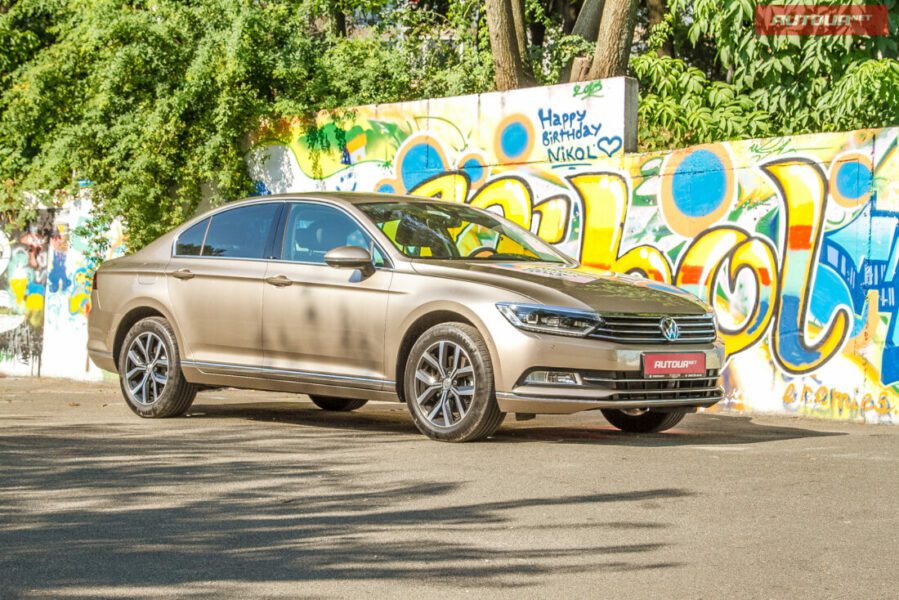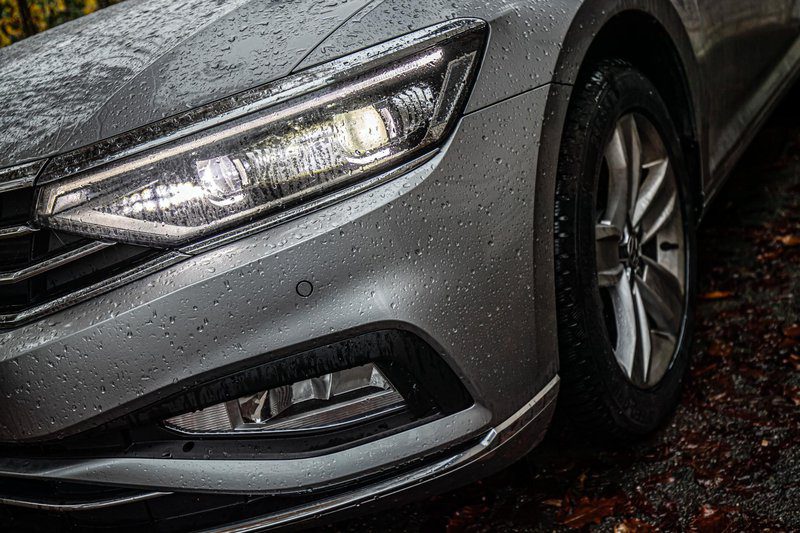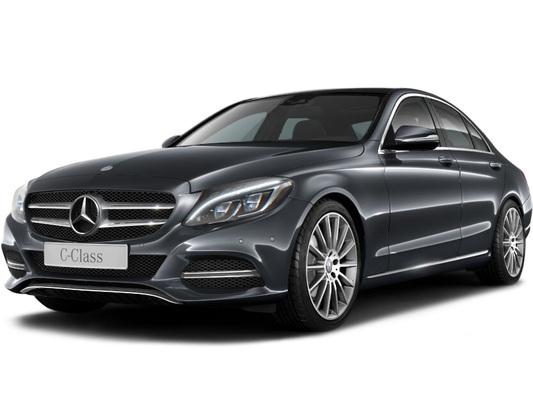
Short test: Volkswagen Passat Variant TDI 2,0 // Already (not) seen
The development of components that contribute to safety and comfort, and therefore make it easier for the driver and passengers to cover the distance in the car, has never been faster. Auxiliary safety systems have become the initiators of the fact that manufacturers regularly update their models. Maybe even so fast that designers can't keep up with them, so looking at a new car, a logical question arises - what's new in it anyway? Side by side, the new Passat is hard to separate. A closer look at the interior of the headlights reveals that they are fully equipped with LED technology and as such are available at entry level equipment. Well, Passatophiles will also detect changes in the bumpers and fridge slots, but let's say they are minimal.
The interior has been updated in a similar manner, but it will be easier to spot changes here. Drivers accustomed to Passats will miss the analogue clock on the dashboard, instead of which there is an emblem that reminds you of which car you are sitting in. Also new is the steering wheel, which with some new switches makes the infotainment interface easier to use intuitively, and with built-in sensors in the ring provides a better experience when using some of the assistance systems. Here we are mainly thinking about the upgraded version of the Travel Assist system, which allows you to drive the car with an assistant at speeds from zero to 210 kilometers per hour.... This works well, radar cruise control clearly monitors traffic, and lane keeping system accurately maintains the direction of travel without unnecessary "chatter".

Even if you look at the details, you can see what Volkswagen thinks about the progress: there are no more classic USB connectors, but there are already new ones, USB-C ports (which old ones could still be left)... Well, connectors are no longer needed to establish an Apple CarPlay connection as it works wirelessly, just as charging can be done wirelessly via induction storage. Subject, however, was not fully equipped with accessories, or they would also see new digital gauges with updated graphics.
Even the engine was not the Passat's main offering, which does not mean that, as such, it does its job poorly. The 150 horsepower four-cylinder turbo diesel gets a completely new exhaust aftertreatment system with two SCR catalysts and dual urea injection to reduce emissions.... Together with the robotic dual-clutch transmission, they form the perfect tandem that is trusted by almost two-thirds of all customers. Such a motorized Passat will not give much pleasure or slowdown when driving, but it will do its job correctly and satisfactorily. The chassis and steering gear are tuned for a comfortable ride and undemanding maneuvering, so don't expect it to bring a smile when cornering. However, the consumption will be such that the economical ones will be satisfied: on our standard lap, the Passat consumed only 5,2 liters of fuel per 100 kilometers.

A worker who is mainly carrying out his mission in business fleets has been refreshed, which will most of all please drivers who spend a lot of time behind the wheel. So, in short: better use of drive technology, better performance of auxiliary systems, and better support for mobile phones. Everything together, however, is backed up by minor visual changes.
Passat's task is transportation. And he does it well.
VW Passat 2.0 TDI Elegance (2019 years)
Basic data
| Sales: | Porsche Slovenia |
|---|---|
| Test model cost: | 38.169 EUR € |
| Base model price with discounts: | 35.327 EUR € |
| Test model price discount: | 38.169 EUR € |
| Power: | 110kW (150 KM) |
| Acceleration (0-100 km / h): | 9,1 s / 100 km / h |
| Maximum speed: | 210 km / h km / h |
| Mixed flow ECE: | 4,1 l / 100 km / 100 km |
Costs (per year)
Technical information
| engine: | 4-cylinder - 4-stroke - in-line - turbodiesel - displacement 1.968 cm3 - maximum power 110 kW (150 hp) at 3.500 rpm - maximum torque 360 Nm at 1.600-2.750 rpm. |
|---|---|
| Energy transfer: | The engine is driven by the front wheels - 7-speed DSG gearbox. |
| Capacity: | top speed 210 km/h - 0-100 km/h acceleration 9,1 s - average combined fuel consumption (ECE) 4,1 l/100 km, CO2 emissions 109 g/km. |
| Mass: | empty vehicle 1.590 kg - permissible gross weight 2.170 kg. |
| External dimensions: | length 4.773 mm - width 1.832 mm - height 1.516 mm - wheelbase 2.786 mm - fuel tank 66 l. |
| Box: | 650-1.780 l |
We praise and reproach
drive technology
operation of auxiliary systems
fuel consumption
no classic USB ports
formally indistinct repair

